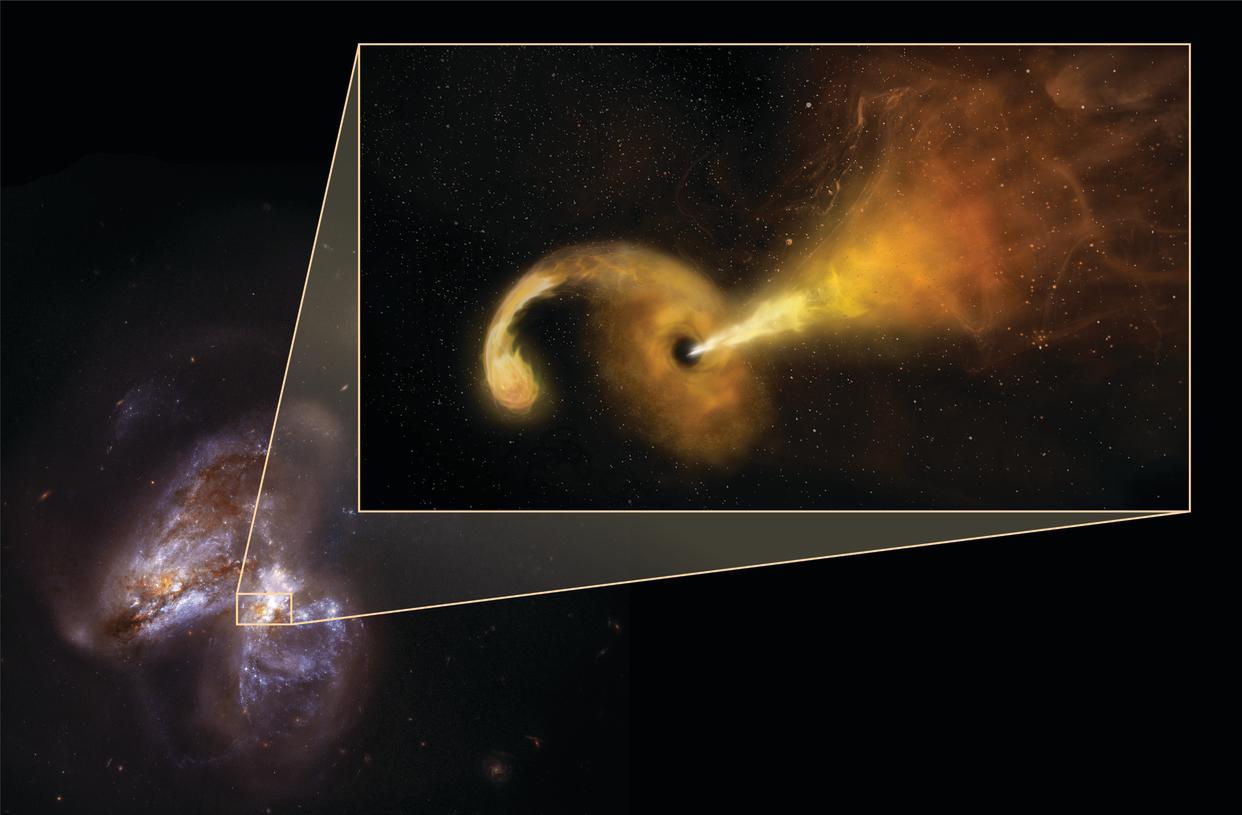Huge supermassive black hole is captured ‘eating’ a star for first time ever

For the first time ever, stronomers have captured the moment a supermassive black hole 20 million times the size of the Sun ripped apart a star which wandered too close.
Astronomers captured the ‘jet’ of material spurting out of the black hole after the star was devoured, after a ten-year analysis of telescope data.
Inside a pair of colliding galaxies called Arp 299, nearly 150 million light-years from Earth, a black hole 20 million times more massive than the Sun shredded a star more than twice the Sun’s mass.
“Never before have we been able to directly observe the formation and evolution of a jet from one of these events,’ said Miguel Perez-Torres, of the Astrophysical Institute of Andalusia in Granada, Spain.
MOST POPULAR TODAY ON YAHOO
Convicted killer jailed for life for grooming young boy on a bus before imprisoning and raping him
Touching moment Tube driver stops to raise flag in tribute to Grenfell
Gang of youths destroy 320 million-year-old stone landmark in mindless act of vandalism
Watch: Thrill-seeking raccoon captivates internet by climbing 23 floors up skyscraper
Astronomers detected a bright burst of infrared emission coming from the nucleus of one of the colliding galaxies in Arp 299 in January 2005.
Continued observations with the VLBA, the European VLBI Network (EVN), and other radio telescopes, carried out over nearly a decade, showed the source of radio emission expanding in one direction, just as expected for a jet.

The measured expansion indicated that the material in the jet moved at an average of one-quarter of the speed of light.
Most galaxies have supermassive black holes, containing millions to billions of times the mass of the Sun, at their cores.
In a black hole, the mass is so concentrated that its gravitational pull is so strong that not even light can escape. When those supermassive black holes are actively drawing in material from their surroundings, that material forms a rotating disk around the black hole, and superfast jets of particles are launched outward.
This is the phenomenon seen in radio galaxies and quasars.
Perez-Torres says, ‘Much of the time, however, supermassive black holes are not actively devouring anything, so they are in a quiet state. Tidal disruption events can provide us with a unique opportunity to advance our understanding of the formation and evolution of jets in the vicinities of these powerful objects.

 Yahoo News
Yahoo News 
